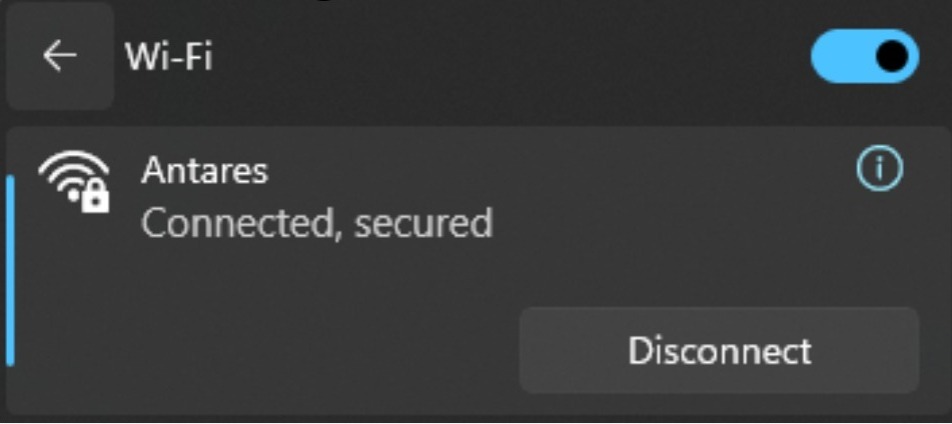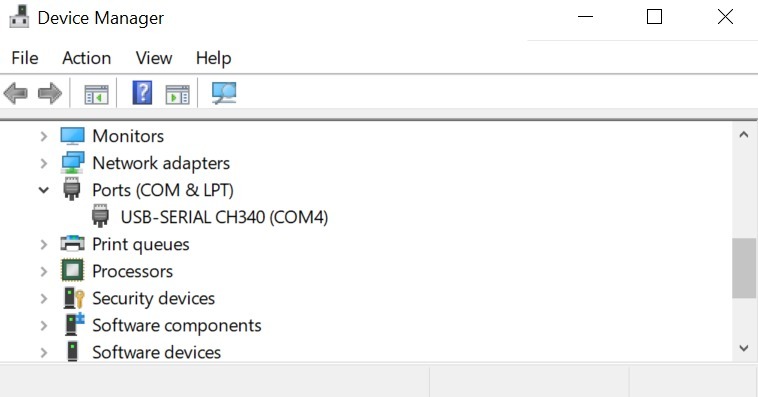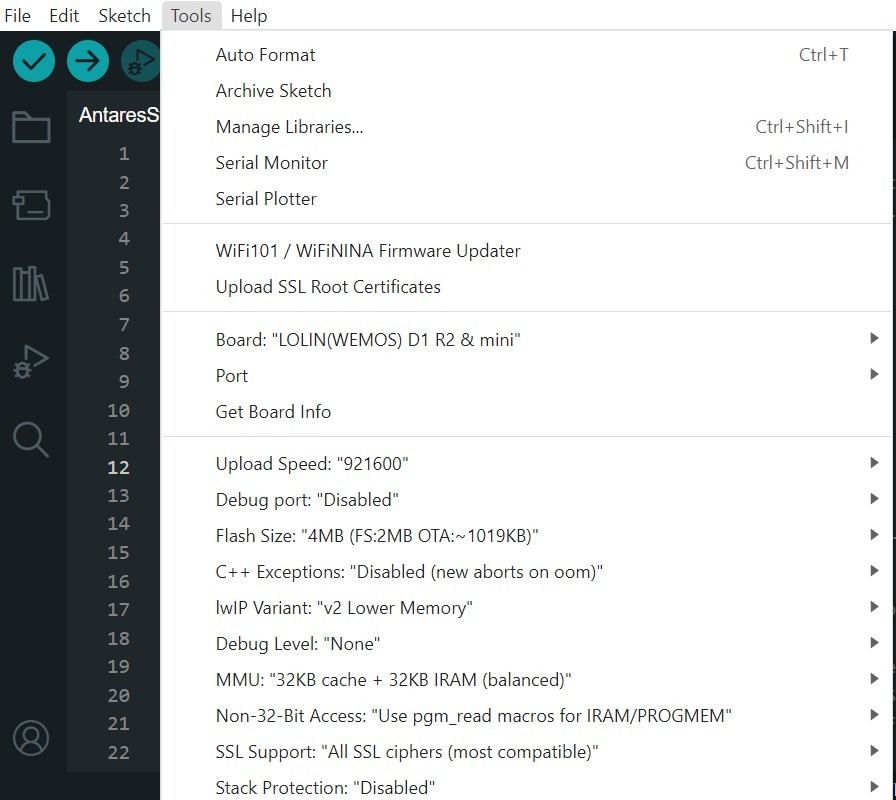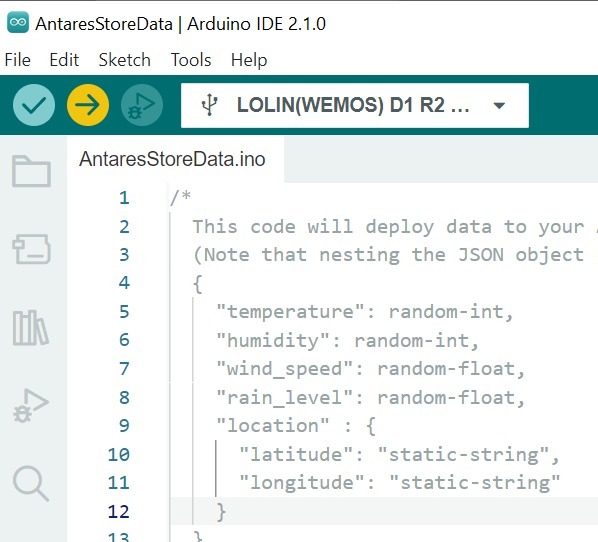Sending Simple Data to Antares with HTTP Protocol
In this project you will be directed to send simple data from ESP8266 to Antares IoT Platform using WiFi connectivity with HTTP protocol.
Prerequisites
The materials required follow the General Prerequisites on the previous page. If you have not prepared the requirements on that page, then you can visit the following page.
General Prerequisites ESP8266 Wi-FiThe additional materials specific to this project are as follows.
Antares ESP HTTP Library. This documentation uses the Antares ESP HTTP library version 1.4.0.
Follow These Steps
1. Launch the Arduino IDE application
2. Opening Sample Programme
Below is the AntaresStoreData sample programme code.
/*
This code will deploy data to your Antares project device with the following structure:
(Note that nesting the JSON object can only be done up to 2 levels using this library)
{
"temperature": random-int,
"humidity": random-int,
"wind_speed": random-float,
"rain_level": random-float,
"location" : {
"latitude": "static-string",
"longitude": "static-string"
}
}
For more information please visit https://antares.id/id/docs.html
*/
#include <AntaresESPHTTP.h> // Include the AntaresESP32HTTP library
#define ACCESSKEY "your-access-key" // Replace with your Antares account access key
#define WIFISSID "your-wifi-ssid" // Replace with your Wi-Fi SSID
#define PASSWORD "your-wifi-password" // Replace with your Wi-Fi password
#define projectName "your-project-name" // Antares project name
#define deviceName "your-project-name" // Name of the device
AntaresESPHTTP antares(ACCESSKEY); // Initialize AntaresESP32HTTP with the access key
void setup() {
Serial.begin(115200); // Initialize serial communication
antares.setDebug(true); // Enable Antares library debug mode
antares.wifiConnection(WIFISSID, PASSWORD); // Connect to WiFi using provided SSID and password
}
void loop() {
// Variables
int temp = random(25,30) ; //Create a random integer value for temperature
int hum = random(75,90); // Create a random integer value for humidity
float windsp = float(random(20, 30))/3.33; //Create a random float value for windspeed
float rainlv = float(random(0, 20))/6.99; //Create a random float value for rainlevel
String lat = "-6.8718189"; //Create a string value for latitude
String lon = "107.5872477"; //Create a string value for longitude
// Add variable data to storage buffer
antares.add("temperature", temp); // Add temperature data to the Antares payload
antares.add("humidity", hum); // Add humidity data to the Antares payload
antares.add("wind_speed", windsp); // Add wind_speed data to the Antares payload
antares.add("rain_level", rainlv); // Add rain_level data to the Antares payload
antares.add("location", "latitude", lat); // Add location latitude data to the Antares payload
antares.add("location", "longitude", lon); // Add location longitude data to the Antares payload
// Send from buffer to Antares
antares.send(projectName, deviceName); // Send data to Antares
delay(10000); // Transfer data for every 10 seconds
}3. Set WiFi Credential and Antares Credential in Program Code
Change the HTTP Protocol parameters in the following variables *ACCESSKEY, *WIFISSID, *PASSWORD, *projectName, and *deviceName. Adjust to the parameters in the Antares console.




4. Compile and Upload Program
Connect the ESP8266 WEMOS D1R2 with your computer and make sure the Communication Port is read.

Set up the ESP8266 WEMOS D1R2 board by clicking Tools > Board > esp8266 in the Arduino IDE, then make sure the one used is LOLIN (WEMOS) D1 R2 & mini. Select the port according to the communication port that is read (in this case COM4). The result will look like the following picture.

After all the setup is complete, upload the programme by pressing the arrow icon as shown below. Wait for the compile and upload process to finish.

If the programme upload is successful, it will look like the following image.

After uploading the programme, you can view the serial monitor to debug the programme. The serial monitor icon is shown in the following image.

Set the serial baud rate to 115200 and select BothNL & CR. The result will look like the following image.
Make sure the serial baud rate matches the value defined in the programme code. If the serial baud rate is not the same between the programme code and the serial monitor, the ASCII characters will not be read properly.

5. Check Data in Antares
After uploading the programme successfully, then open the device antares page and see if the data has been successfully sent.


Last updated